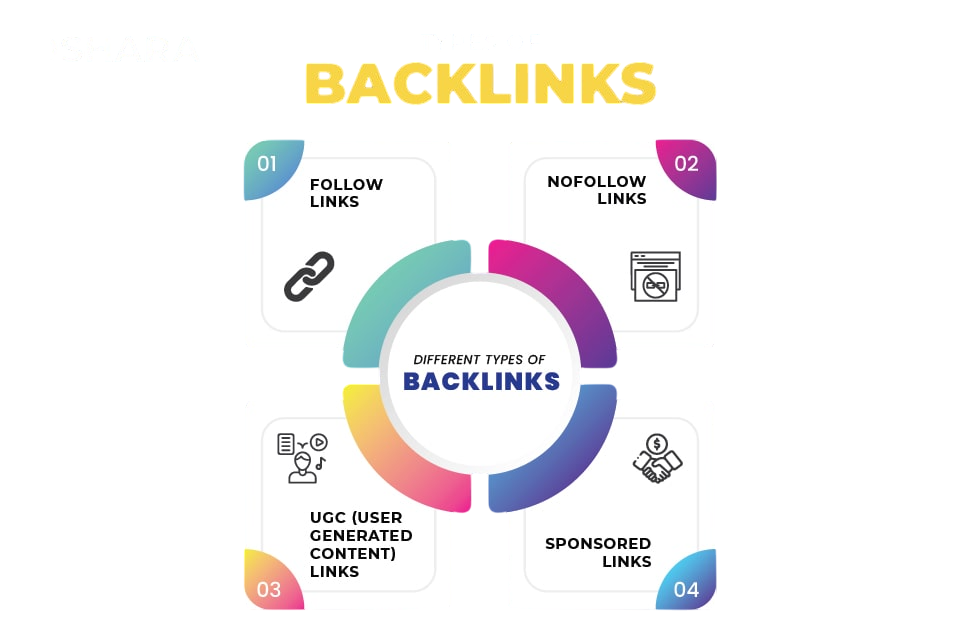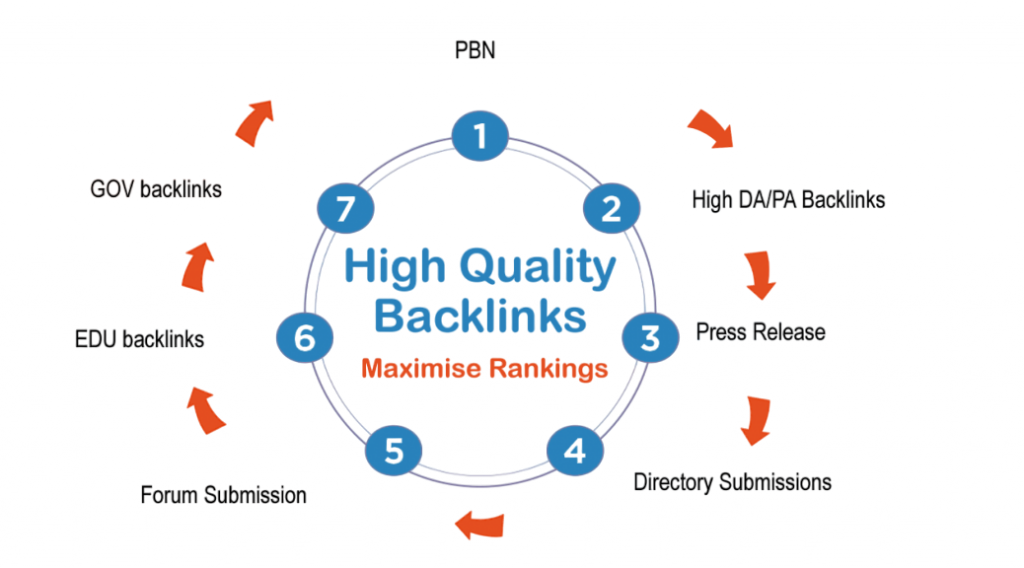
- Introduction
- Definition of Backlinks
- Why Are Backlinks Important in SEO?
- Types of Backlinks
- How Backlinks Influence Search Engine Rankings
- Qualities of a High-Quality Backlink
- How to Get Backlinks: Strategies and Techniques
- Backlink Analysis Tools
- Conclusion
Introduction
If you’ve ever researched SEO (Search Engine Optimization), you’ve likely come across the term “backlink.” Often described as one of the most important ranking factors, backlinks are a core element of how search engines determine which web pages are trustworthy and authoritative. In this in-depth guide, we’ll explore what backlinks are, why they matter for Backlinks in SEO, the different types of backlinks, and proven strategies to build them for your website.Backlinks, Digital Marketing Training also known as inbound or incoming links, are links from one website to another. In SEO, they are crucial because they act as votes of confidence from other sites, signaling to search engines that your content is valuable and trustworthy. The more high-quality backlinks a website has, the better its chances of ranking higher in search engine results pages (SERPs). Understanding backlinks, their types, and how to build them effectively is essential for any successful SEO strategy.
Ready to Get Certified in Digital Marketing? Explore the Program Now Digital Marketing Online Training Offered By ACTE Right Now!
Definition of Backlinks
In simple terms, a backlink is a link from one website to another. When website A links to website B, that link is a backlink for website B. Backlinks are also referred to as inbound links or incoming links because they represent traffic coming to your site from other domains. For example: If a popular blog includes a link to your ecommerce store, that’s a backlink. Backlinks signal to search engines that your content is credible, useful, and worth referencing much like a citation in academic research.Backlinks, also called inbound links or incoming links, Google’s Match Type Changes are hyperlinks from one website that point to another website. In the context of SEO (Search Engine Optimization), backlinks are important because they serve as endorsements or votes of confidence from one site to another. When a reputable website links to your content, it signals to search engines like Google that your site is credible, relevant, and valuable. This can help improve your site’s search engine rankings and increase organic traffic. Backlinks are considered one of the key ranking factors used by search engines to determine the authority and popularity of a webpage. The more high-quality backlinks a site has from relevant and trustworthy sources, the better its chances of ranking higher in search results. However, not all backlinks are equal. Links from authoritative and relevant websites carry more weight, while links from spammy or irrelevant sites may have little to no positive effect and can even harm your SEO.There are different types of backlinks, including natural links (earned without asking), manual links (built through outreach), and self-created links (such as in forums or blog comments). Understanding backlinks and how to acquire them ethically is essential for building a strong SEO strategy and improving online visibility.
Why Are Backlinks Important in SEO?
Backlinks are one of the top three ranking factors in Google’s search algorithm. Here’s why:
- Search Engine Trust: Search engines view backlinks as a “vote of confidence.” The more high-quality backlinks your site earns, the more trustworthy it appears.
- Increased Rankings: Backlinks directly affect how well your pages rank in search engine results pages (SERPs). Pages with more authoritative backlinks generally rank higher.
- Referral Traffic: Backlinks also bring visitors from the linking site. This not only increases your audience but also potential conversions.
- Faster Indexing: New content can be discovered and indexed faster when it’s linked from popular sites that are frequently Inbound Marketing crawled by search engines.
- DoFollow Backlinks: DoFollow is the default link type and passes “link juice” the authority and SEO value of the referring page to the destination page. Ideal for improving search rankings and signaling trust and authority.
- NoFollow Backlinks: NoFollow links contain a rel=”nofollow” tag that tells search engines not to pass SEO value to the linked page. They don’t directly impact rankings but are useful for link diversity and referral traffic. Common NoFollow links include blog comments, forum posts, Benefits of being a Content Marketer and social media links.
- UGC and Sponsored Links: Google introduced new link attributes: rel=”ugc” for User Generated Content (e.g., comments, forum posts) and rel=”sponsored” for paid or affiliate links. These help Google understand the context of the link.
- Authority Building: Links from reputable sites transfer domain authority, signaling content quality.
- Relevance: Backlinks from topically related websites matter more than those from unrelated sites.
- Anchor Text: The clickable text used in a backlink impacts how Google interprets the linked page’s content. For example, anchor text “best running shoes” is more SEO-relevant than “click here.”
- Link Diversity: A natural mix of links from blogs, Digital Marketing Training news sites, forums, etc., makes your backlink profile healthier.
- Guest Posting: Write articles for reputable websites in your niche and include a link back to your site.
- Broken Link Building: Find broken links on other websites Digital Marketing Metrics and suggest your relevant content as a replacement.
- Skyscraper Technique: Find high-performing content, create something better, and ask those linking to the original to link to you.
- Resource Link Building: Create high-value guides or tools, then reach out to sites that curate similar content.
- HARO (Help a Reporter Out): Respond to journalist queries in exchange for backlinks from news websites.
- Infographics and Visual Content: Visual content gets shared widely and can earn backlinks organically.
- Help monitor and evaluate backlinks pointing to your website
- Provide data on backlink quality, quantity, and sources
- Identify harmful or spammy backlinks for removal or disavowal
- Offer metrics like domain authority, anchor text, and referring domains
- Allow competitor backlink analysis for strategy insights
- Track backlink profile progress and link-building effectiveness
- Popular tools include Ahrefs, Moz Link Explorer, Facebook Pixel SEMrush, and Majestic
To Explore Digital Marketing in Depth, Check Out Our Comprehensive Digital Marketing Training To Gain Insights From Our Experts!
Types of Backlinks
Not all backlinks are equal. Understanding the types is critical to your SEO success.

How Backlinks Influence Search Engine Rankings
Backlinks influence rankings in multiple ways:
Looking to Master Digital Marketing? Discover the Digital Marketing Expert Masters Program Training Course Available at ACTE Now!
Qualities of a High-Quality Backlink
A high-quality backlink is a crucial element in Backlinks in SEO because it signals to search engines that your website is trustworthy, authoritative, and relevant. However, not every backlink carries the same weight. One of the most important qualities of a good backlink is relevance. Backlinks from websites related to your industry or niche are far more valuable than those from unrelated sites because they indicate to search engines that your content is connected to a specific topic or field. For example, a link to a tech blog from a popular technology news site will be seen as more credible than one from a fashion website. Another key factor is the authority of the linking site. Backlinks from websites with high domain authority often determined by factors like the site’s age, popularity, trustworthiness, and the quality of its own content pass more SEO strategy value to your site. Links from well-established, respected sources such as universities, government sites, or major news outlets are especially powerful. Trustworthiness also plays a major role; backlinks from sites that maintain high editorial standards and avoid spammy or manipulative practices are more beneficial. Additionally, Display Advertising the placement and context of the backlink matter.

Links embedded naturally within relevant and informative content provide stronger signals than links placed in footers, sidebars, or user-generated comments. The anchor text, or the clickable text of the link, should be descriptive and relevant, helping search engines understand the topic of the linked page. Finally, whether a backlink is “follow” or “nofollow” affects its value; “follow” links pass ranking power, while “nofollow” links generally do not, though they can still bring referral traffic and contribute to a diverse backlink profile. Overall, backlinks that are relevant, authoritative, trustworthy, well-placed, and “follow” create the strongest impact on SEO performance.
How to Get Backlinks: Strategies and Techniques
Building backlinks takes effort but pays off in long-term SEO gains. Here are effective methods:
Get Listed on Directories: Use niche-specific, reputable directories for an easy backlink.
Backlink Analysis Tools
Preparing for Digital Marketing Job Interviews? Have a Look at Our Blog on Digital Marketing Interview Questions and Answers To Ace Your Interview!
Conclusion
Backlinks remain one of the most powerful and influential elements of SEO. They serve as trust signals to search engines, increase visibility, and drive referral traffic. However, not all backlinks are created equal. Focus on building a diverse, natural, and high-quality backlink profile through ethical practices and relevant content. Whether you’re a beginner or an experienced marketer, Digital Marketing Training .understanding backlinks is crucial to mastering SEO strategy. With the right strategies and tools, you can grow your site’s authority and climb the search rankings. Would you like me to format this into a downloadable PDF, Backlink Analysis Tools add examples or visuals, or help build a backlink strategy for your own website? Just let me know.




